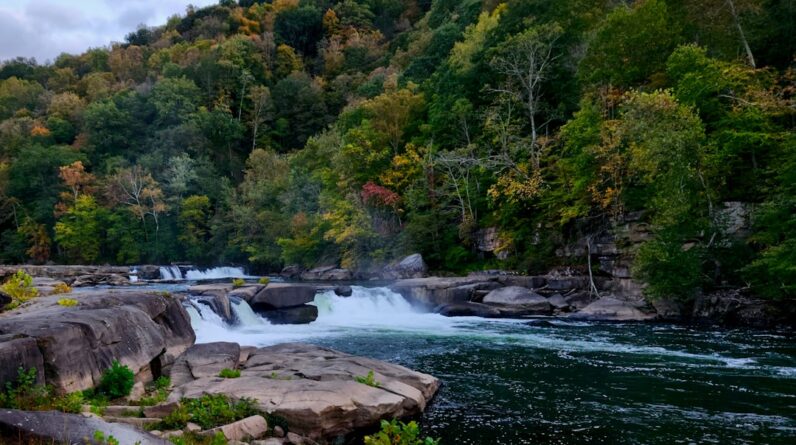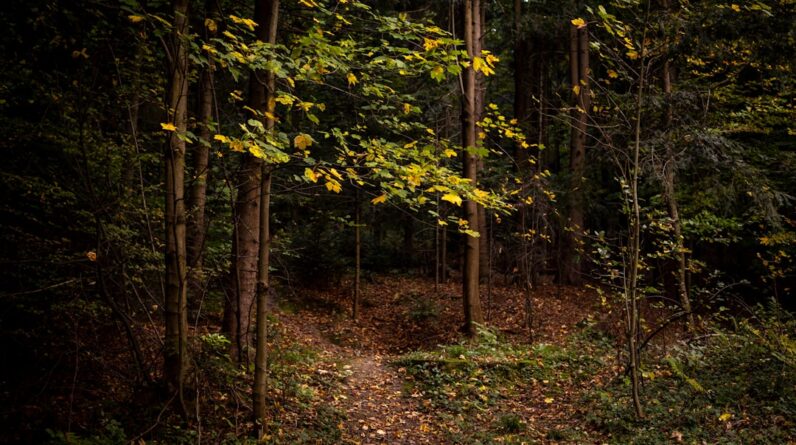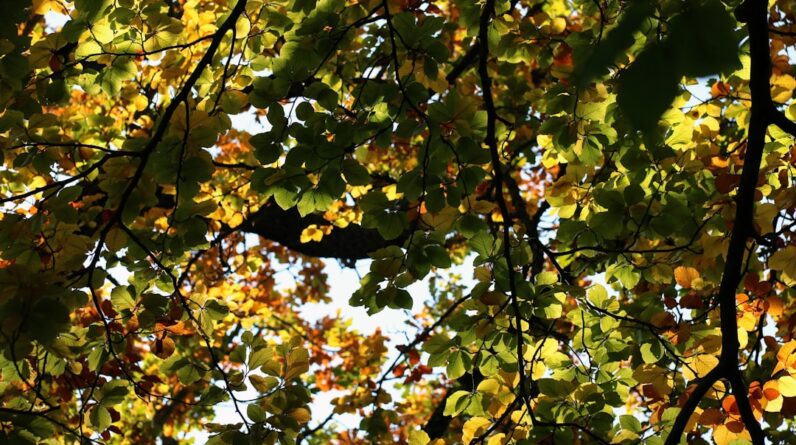Algonquin Park, located in Ontario, Canada, is a stunning natural wonder that attracts visitors from all over the world. Known for its breathtaking landscapes, diverse wildlife, and pristine lakes, Algonquin Park offers a wide range of outdoor activities for nature enthusiasts. One of the most unique experiences that Algonquin Park has to offer is stargazing and night hiking. In this article, we will explore why Algonquin Park is a great place for stargazing, provide tips for stargazing in the park, discuss the best times of year for stargazing, and highlight the top stargazing spots and night trails in Algonquin Park.
Key Takeaways
- Algonquin Park After Dark offers a unique and unforgettable stargazing experience.
- Algonquin Park’s remote location and lack of light pollution make it an ideal place for stargazing.
- Tips for stargazing in Algonquin Park include bringing warm clothing and using red lights to preserve night vision.
- The best times of year for stargazing in Algonquin Park are in the fall and winter months.
- Equipment needed for stargazing in Algonquin Park includes binoculars, a telescope, and a star chart.
Why Algonquin Park is a Great Place for Stargazing
Algonquin Park has been designated as a dark sky preserve by the Royal Astronomical Society of Canada. This means that the park has taken measures to minimize light pollution and preserve the natural darkness of the night sky. The dark sky preserve designation ensures that visitors to Algonquin Park can experience the full beauty of the night sky without interference from artificial lights.
Stargazing in a dark sky preserve offers several benefits. First and foremost, it allows for optimal viewing conditions. With minimal light pollution, the stars appear brighter and more vibrant, making for a truly awe-inspiring experience. Additionally, stargazing in a dark sky preserve provides an opportunity to see celestial objects that are not visible in areas with high levels of light pollution.
Algonquin Park’s night sky is particularly unique due to its location away from major cities and its proximity to the Canadian Shield. The Canadian Shield is a large area of exposed Precambrian rock that creates a stunning backdrop for stargazing. The park’s remote location also means that there is less atmospheric pollution, resulting in clearer views of the night sky.
Tips for Stargazing in Algonquin Park
When planning a stargazing trip to Algonquin Park, it is important to plan ahead. Check the weather forecast and choose a night with clear skies for optimal viewing conditions. It is also important to choose the right location within the park. Look for areas that are away from artificial lights and have a clear view of the horizon.
Preparing for the weather is also crucial when stargazing in Algonquin Park. Dress in layers to stay warm, as temperatures can drop significantly at night. Bring blankets or sleeping bags to sit or lie on, as well as snacks and water to stay hydrated. It is also a good idea to bring insect repellent, as mosquitoes and other bugs can be present during the warmer months.
To minimize light pollution, use red or amber lights instead of white lights. Red and amber lights have a lower impact on night vision and will not disrupt your ability to see the stars. Avoid using flashlights or other bright lights unless absolutely necessary.
Best Times of Year for Stargazing in Algonquin Park
Algonquin Park offers stargazing opportunities year-round, but the best times of year for stargazing are during the spring and fall seasons. During these seasons, the nights are longer, providing more time for stargazing. The cooler temperatures also mean that there is less atmospheric distortion, resulting in clearer views of the night sky.
In the spring, Algonquin Park comes alive with vibrant colors as the trees and flowers begin to bloom. This creates a stunning backdrop for stargazing and adds an extra element of beauty to the experience. The fall season is equally breathtaking, with the changing leaves creating a kaleidoscope of colors against the night sky.
Equipment Needed for Stargazing in Algonquin Park
Stargazing in Algonquin Park requires minimal equipment, but there are a few essentials that you will need. First and foremost, a good pair of binoculars or a telescope is essential for observing celestial objects in detail. Choose a pair of binoculars with a high magnification and a wide field of view for the best results.
A star chart or smartphone app can also be helpful for identifying constellations and other celestial objects. These tools will help you navigate the night sky and locate specific stars, planets, and other objects of interest.
If you are interested in capturing photographs of the night sky, a camera with manual settings and a tripod are essential. A tripod will help stabilize the camera and prevent blurring caused by hand movement. Additionally, a remote shutter release or timer function can be useful for minimizing camera shake.
Top Stargazing Spots in Algonquin Park

Algonquin Park offers several top stargazing spots that provide optimal viewing conditions. One of the best spots is the Algonquin Visitor Centre, which offers panoramic views of the night sky from its observation deck. The Visitor Centre also hosts stargazing events throughout the year, where visitors can learn about the night sky from knowledgeable guides.
Another great spot for stargazing is the Lake of Two Rivers campground. This campground is located away from major sources of light pollution and offers stunning views of the night sky over the lake. The campground also has designated stargazing areas where visitors can set up their telescopes or binoculars.
The Lookout Trail is another popular spot for stargazing in Algonquin Park. This trail offers breathtaking views of the surrounding landscape during the day and provides an ideal vantage point for stargazing at night. The trail is relatively short and easy to navigate, making it accessible to visitors of all fitness levels.
Night Trails in Algonquin Park: What to Expect
In addition to stargazing, Algonquin Park also offers several night trails that allow visitors to experience the park in a whole new way. These trails are marked and maintained, making them safe and accessible for night hiking.
One of the most popular night trails in Algonquin Park is the Bat Lake Trail. This trail is approximately 2.5 kilometers long and takes visitors through a variety of habitats, including wetlands and forests. The trail is known for its diverse wildlife, including bats, which can often be seen flying overhead at dusk.
The Hemlock Bluff Trail is another great option for night hiking in Algonquin Park. This trail is approximately 3 kilometers long and takes visitors through a beautiful old-growth forest. The trail is relatively flat and easy to navigate, making it suitable for hikers of all skill levels.
Safety Tips for Night Hiking in Algonquin Park
Safety should always be a top priority when hiking at night, especially in remote areas like Algonquin Park. Before setting out on a night hike, make sure to inform someone of your plans and expected return time. This will ensure that someone knows where you are and can alert authorities if you do not return as planned.
When hiking at night, it is important to use a headlamp or flashlight to illuminate the trail. Make sure to bring extra batteries or a backup light source in case your primary light fails. It is also a good idea to bring a map and compass or GPS device to help navigate the trails.
Stay on designated trails and avoid venturing off into unmarked areas. This will help prevent getting lost or encountering dangerous terrain. It is also important to watch your step and be aware of your surroundings, as the terrain can be uneven and obstacles may be harder to see at night.
Wildlife Encounters While Night Hiking in Algonquin Park
Algonquin Park is home to a wide range of wildlife, including bears, moose, wolves, and more. While wildlife encounters are rare, it is important to be prepared and know how to react if you do encounter wildlife while night hiking.
To avoid wildlife encounters, make noise while hiking to alert animals of your presence. This will give them the opportunity to move away before you get too close. It is also important to keep a safe distance from wildlife and never approach or feed them.
If you do encounter wildlife, remain calm and slowly back away. Do not run or make sudden movements, as this may provoke the animal. If the animal approaches you, make yourself appear larger by raising your arms and speaking loudly. In the unlikely event of a bear encounter, use bear spray if you have it and play dead if the bear makes contact.
Why Algonquin Park After Dark is a Must-See Experience
Algonquin Park after dark offers a truly unique and awe-inspiring experience that should not be missed. The park’s dark sky preserve designation ensures optimal viewing conditions for stargazing, allowing visitors to see the night sky in all its glory. With its remote location and minimal light pollution, Algonquin Park offers some of the best stargazing opportunities in North America.
In addition to stargazing, Algonquin Park also offers a variety of night trails that allow visitors to explore the park after dark. These trails provide a different perspective of the park’s landscapes and offer the chance to see nocturnal wildlife in their natural habitat.
Whether you are a seasoned stargazer or new to the hobby, Algonquin Park after dark is an experience that should not be missed. Plan your trip, pack your gear, and prepare for an unforgettable adventure under the stars in one of Canada’s most beautiful national parks.
If you’re planning a trip to Algonquin Park and want to make the most of your experience, don’t miss out on the breathtaking stargazing opportunities and night trails. Our article, “Algonquin Park After Dark: A Guide to Stargazing and Night Trails,” provides all the information you need to explore the park’s celestial wonders. And while you’re at it, check out this related article on healthy aging: “The Age of Enlightenment: Mental Wellness and Mindfulness Practices for Seniors.” Discover how mindfulness practices can contribute to emotional well-being in your later years.








